9 Ways Vestibular Physical Therapy Can Improve Your Balance and Reduce Dizziness
Imagine a life without balance. Often referred to as our sixth sense, balance is something that most of us take for granted—until of course, we lose it.
Losing this sixth sense can affect many aspects of your gait, making it difficult to walk in a straight line or causing you to stumble or veer to one side. It can make you feel like you are swaying or rocking, even when you are standing completely still.
Without balance, you can feel disconnected from your surroundings and no longer fully grounded in your environment. Your ability to judge distances or perceive spatial relationships accurately can be affected which may cause you to feel disoriented or lost, even in familiar surroundings. Imbalance can also cause you to fall and lead to severe injuries such as broken bones or head trauma.
Now imagine that this loss of balance you are experiencing is also accompanied by a feeling of dizziness, or worse—an intense type of dizziness called vertigo. This is a reality that over 69 million Americans with vestibular disorders know all too well.
The symptoms caused by vestibular disorders go way beyond just imbalance and dizziness. Issues within the vestibular system can cause hearing loss and/or changes, vision problems, nausea, vomiting, fatigue, brain fog, sensitivity to movement and/or visual information, difficulty with concentration, memory and even anxiety.
The good news is that both balance and dizziness can be improved through a specialized type of physical therapy called vestibular rehabilitation!
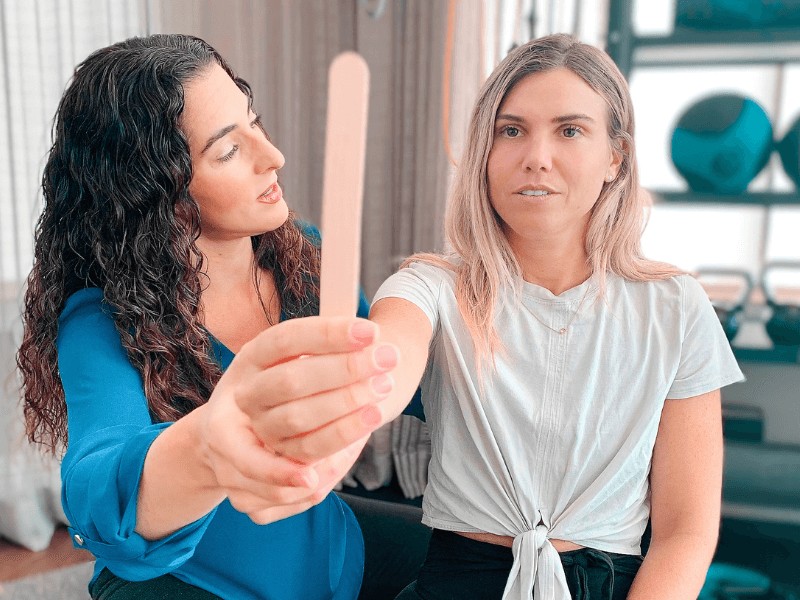
Dizziness and Vertigo—Are They the Same Thing?
While most people may not be familiar with the word “vestibular,” most of us have heard the word “vertigo” used by someone we know if we haven’t already experienced it ourselves. Dizziness and vertigo are often used interchangeably to describe the symptoms related to a vestibular disorder. However, these terms actually describe two different types of sensations…
- Vertigo is a type of dizziness that causes a person to feel like they are spinning, whirling, or in motion. It is a sensation of being off balance and it can appear that you are moving or the environment around you is moving.
- Dizziness is a more vague term that can describe a wide range of sensations such as lightheadedness, drunkenness, feeling woozy, weak, unsteady, disequilibrium, swaying, rocking, tilting, disorientation, floating and fainting (just to name a few!).
What is the Vestibular System?
Vestibular refers to the vestibular system, which is one of 3 sensory systems that the brain receives information from about balance and body position. It is responsible for maintaining balance, spatial orientation, and coordination of movement. The Vestibular System consists of 2 parts: a central part, inside the brain, and a peripheral part, outside the brain, in the inner ear.
- The peripheral vestibular system in the inner ear holds the vestibular organs that sense head/body position, head movements, speed and orientation. It contributes immensely to our sense of balance, spatial orientation, and coordination of movement.
- The central vestibular system in the brain includes the cerebellum, the cerebral cortex, and the brainstem. It acts like a computer that processes the sensory information involved with controlling balance, the muscles that move the limbs and trunk, and eye movements.
These areas of the brain take this sensory information from the inner ears, visual information from the eyes, and information about position (proprioception) from the muscles and joints and process it rapidly. This is called Sensory Integration. As this is occurring, the brain sends messages outward to the muscles that control movements of the eyes, head and neck, trunk, and legs, thus allowing a person to both maintain balance and have clear vision while their head and body is moving.
A vestibular disorder refers to any condition or dysfunction that affects any part of the vestibular system. Vestibular disorders can result from various causes, including infections, head trauma, inner ear disorders (such as Meniere’s disease), vestibular migraines, autoimmune diseases, and even the normal aging process. These disorders can manifest in various ways and may result from problems within the inner ear, the vestibular nerve, or the areas of the brain that process vestibular information. Dysfunction or impairment of the vestibular system can lead to the symptoms I discussed above.
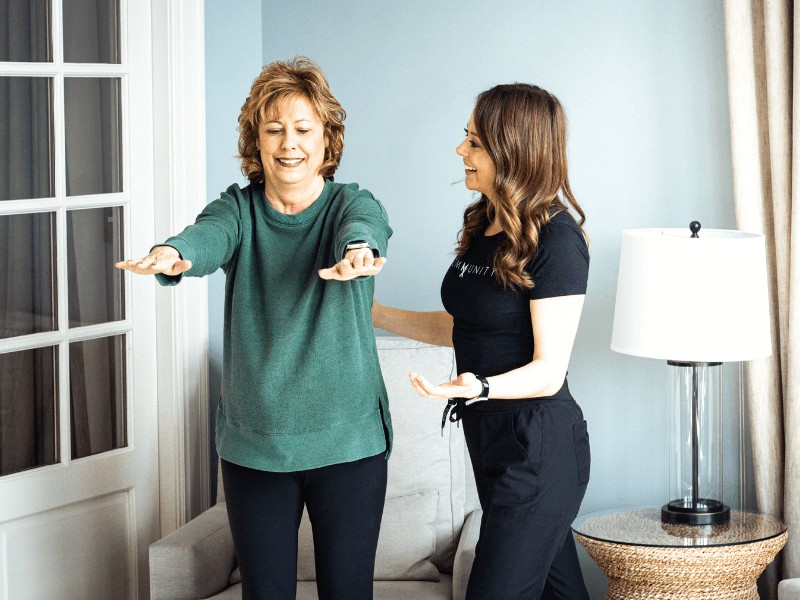
What is Vestibular Physical Therapy?
Treatment for vestibular disorders often involves vestibular rehabilitation therapy. Vestibular Rehabilitation Therapy, or VRT, is a specialized form of physical therapy, designed by a specially-trained physical therapist. It aims to improve or eliminate the symptoms and problems associated with vestibular disorders and restore balance function through specialized exercises and techniques. VRT uses the concepts of neural plasticity which is the fancy term for the brain’s ability to change and adapt itself by re-wiring the circuits in the brain and making new connections.
For most people who have a vestibular disorder, the deficit is permanent because the amount of restoration of vestibular function after the vestibular system is damaged by illness, injury, or aging, is very small. However, symptoms can be reduced and function can be improved because of neural compensation in the brain. This occurs because the brain learns to use other senses (vision and somatosensory or body sense) to substitute for the deficient part(s) of the vestibular system. VRT can assist in recovery by promoting compensation and improving the symptoms related to many vestibular disorders.
How Exactly Does VRT Help Improve Balance and Dizziness?
Neuroplasticity plays a vital role in facilitating recovery and adaptation within the vestibular system during a course of VRT. Neuroplasticity refers to the brain’s ability to reorganize itself by forming new neural connections and pathways in response to learning, experience, and injury. VRT aims to promote neuroplasticity within the vestibular system by providing targeted exercises and interventions that challenge and stimulate the affected sensory pathways. Through consistent and repetitive practice of specific exercises, individuals can promote the rewiring of neural circuits, leading to improved balance, reduced symptoms of dizziness, nausea, etc. and enhanced functional outcomes.
Depending on the vestibular problem(s) identified in a detailed Vestibular evaluation, VRT exercises are prescribed based on several treatment principles:
1. Habituation
Habituation Exercises are used to treat symptoms of dizziness that are produced because of self-motion and/or visual stimuli. Habituation exercise is used for patients who report increased dizziness when they move around, especially when they make quick head movements, or when they change positions. It is also used to help patients who report increased dizziness in visually stimulating environments (shopping malls, grocery stores, when watching action movies or T.V., and/or when walking over patterned carpets, shiny floors, wide open spaces, etc.)
The goal of habituation is to reduce dizziness through repeated exposure to the specific movements or visual stimuli that provoke the patient’s symptoms. This occurs as the brain learns to ignore the abnormal signals it’s receiving.
2. Gaze Stabilization
Gaze Stabilization Exercises help the vestibular system adapt by modifying eye movements in response to movements of the head. Improving the control of eye movements results in clear and accurate vision during head movement. These exercises are used for patients who report problems seeing clearly because their visual world appears to bounce or jump around, such as when reading, when trying to identify objects in the environment, and especially when moving around.
Thus, the goal of gaze stabilization exercises is to improve the interaction between the visual systems and the vestibular systems during high-velocity head movements thus improving visual stability, and reducing the symptoms of dizziness, vertigo, etc.
3. Balance Retraining
Balance Exercises are designed to address each patient’s specific underlying balance problems and to facilitate improvements in balance reactions. Exercises also improve awareness of the body position in space, improve the use of sensory inputs from the skin, the muscles and joints in the legs, trunk, head and neck, strengthen postural muscles and improve postural control. The exercises are designed to be challenging, but safe enough so patients do not fall while doing them.
Balance retraining is utilized to improve steadiness so that daily activities for self-care, work, and leisure can be performed successfully and safely. The second goal of balance training is to decrease the risk of falling or prevent falls all together. It helps to improve spatial and kinesthetic awareness.
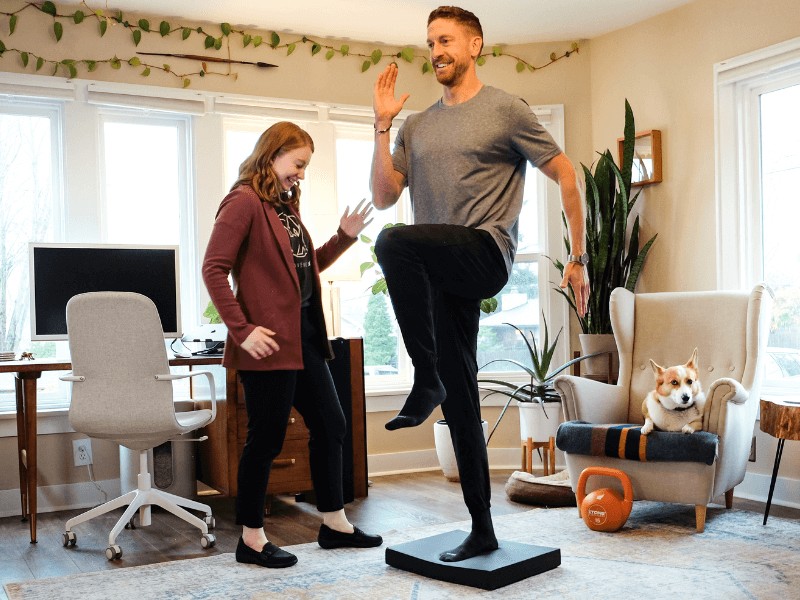
4. Canalith Repositioning Maneuvers:
If it is determined during your evaluation that Benign Paroxysmal Positional Vertigo, or BPPV, is the cause of your symptoms, Canalith repositioning maneuvers will be used. BPPV is one of the most common vestibular disorders characterized by brief episodes of vertigo triggered by changes in head position. Depending on the type of BPPV identified, different repositioning maneuvers will be selected to help resolve the dizziness and imbalance that is triggered by position changes of the head/body.
5. Cervicogenic Dizziness
Cervicogenic dizziness arises from dysfunction in the neck, often due to issues such as cervical spine misalignment, muscle tension, or joint dysfunction. People with vestibular disorders will also often develop neck pain due to various reasons related to how the vestibular system interacts with other sensory systems, particularly the visual and proprioceptive (sensory feedback from muscles and joints) systems.
If it is determined in your evaluation with your therapist that your dizziness is related to your neck, or is compounding the existing vestibular issue, the VRT program can also include specific exercises and manual therapy techniques targeting the neck muscles, joints, and proprioception (awareness of body position). These interventions aim to decrease pain, improve neck ROM and flexibility, strength, coordination, and position sense (proprioception), which can alleviate symptoms of dizziness.
6. General Conditioning Exercises
These exercises may include cardiovascular conditioning, muscle strength, power, and endurance training, and flexibility exercises to improve overall physical fitness and endurance. Specific interventions such as manual therapy, can also address any musculoskeletal and neuromuscular impairments that can also affect balance and increase a patient’s risk of falling.
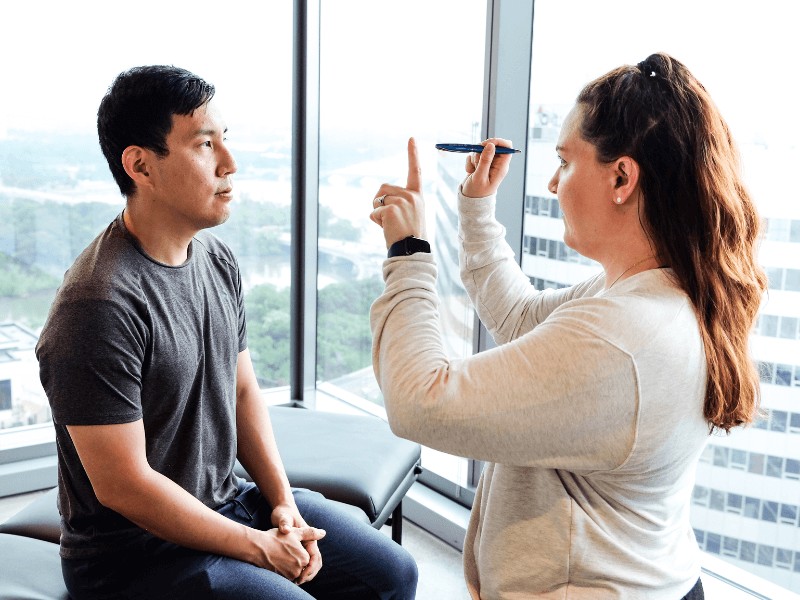
7. Gait Training
Gait training exercises focus on improving walking mechanics, stride length, step width, and overall gait pattern. Individuals may practice walking on different surfaces, navigating obstacles, and performing tasks that challenge balance and coordination. Individuals are taught compensatory strategies to manage dizziness or vertigo symptoms during walking and other daily activities. This may include techniques such as using visual anchors, adopting specific head positions, or performing habituation exercises to desensitize the vestibular system.
8. Functional Training
Functional training in vestibular rehabilitation focuses on improving activities of daily living (ADLs) by targeting the specific impairments related to vestibular dysfunction. Incorporating specific functional activities that challenge the vestibular system can help individuals adapt and improve their ability to perform daily tasks. Some examples include: Turning the head while walking or reaching for objects, walking on uneven surfaces or navigating obstacles. Simulated activities such as getting in and out of a car, getting in/out of bed, unloading the dishwasher, carrying objects while walking, climbing stairs, or moving through a crowded space are also added to a VRT program.
9. Fall Prevention, Safety, & Fall Recovery
In addition to a balance retraining program, vestibular rehabilitation can lower the risk of falls, which is particularly important for older adults or individuals with vestibular disorders. Education on fall prevention, safety awareness, and instruction on how to fall safely and in fall recovery, are important to include for both patients and their caregivers.
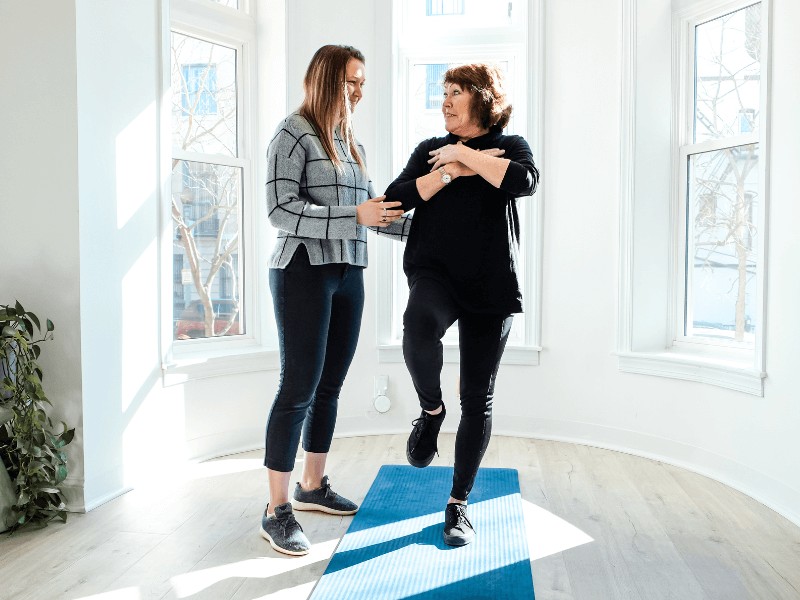
VRT Programs are NOT One-Size-Fits-All
The effectiveness of a VRT program depends on multiple factors unique to each individual, including the specific vestibular disorder, its underlying causes, the severity of symptoms, and the patient’s overall health and lifestyle.
Different vestibular disorders require specific treatment approaches, so the program needs to be properly aligned with the correct diagnosis. Even within the same diagnosis, symptoms can vary widely between individuals so further customization is needed . In addition, patients often have other health conditions or physical limitations that must be considered when designing a VRT program.
For example, someone with arthritis, a heart condition, or Parkinson’s Disease, may require modifications to certain exercises to improve tolerance or even additional interventions. The rehabilitation program should also be aligned with the patient’s goals and lifestyle. Factors such as age, occupation, and recreational activities can influence the design of the program. As each patient responds differently to specific exercises and treatments, the VRT program should be adapted based on the patient’s unique response and feedback. Furthermore, the selection and progression of exercises should be based on the individual’s needs and abilities.
Lastly, all VRT programs should include a home exercise program (HEP) which is designed to complement and reinforce the benefits of in-clinic VRT sessions, promoting long-term recovery of balance, improved mobility, and symptom management. Vestibular Therapists play a key role in empowering and educating patients to take an active role in their recovery through home exercises. Experienced therapists are skilled in helping their patients to stay motivated and adhere to their HEP throughout a treatment course by constantly modifying the HEP to challenge the vestibular system, emphasizing the importance of consistency, and the benefits that can be achieved with a quality VRT program. Patient consistency is a crucial component of successful VRT outcomes.
Conclusion
Vestibular rehabilitation can be highly effective in improving balance and reducing dizziness for people with vestibular disorders as well as other neurological disorders/diseases. To optimize outcomes, each VRT program should be developed with customized exercises to address the unique presentation and the specific problem(s) of each individual. It is essential that the VRT program is supervised by healthcare professionals experienced in vestibular disorders, such as specialized vestibular therapists (PT, OT). These professionals can perform skilled and thorough assessments, develop personalized treatment plans, and make necessary adjustments based on the patient’s progress and feedback. So, it’s essential that these programs are tailored to each individual for the best chance of success and symptom improvement.
Before a VRT exercise program can be designed, a comprehensive clinical examination is needed to identify problems related to the vestibular disorder. Depending on your vestibular condition, specific exercises are selected to stimulate, adapt, and retrain the vestibular system. It is essential to work closely with a qualified vestibular therapist (many of whom have advanced training and certifications in vestibular rehabilitation) to ensure that the exercises are safe and tailored to your specific needs and goals. It’s also important to note that dizziness can have various causes, including inner ear problems, vestibular disorders, low blood pressure, dehydration, medication side effects, or neurological conditions. If you frequently experience dizziness or if it’s severe and accompanied by other concerning symptoms, it’s advisable to consult with a healthcare professional for proper evaluation and management.
If you or someone you know is suffering with a vestibular disorder, sign up now to request care with a specialist who can properly assess and treat your needs. Receive care at home, in your office, at the gym, or stop by one of our local clinics. At MovementX, our highly specialized physical therapists are here to support you on your journey towards better vestibular and movement health.
About the Author
Dr. Janine DeBrito is a physical therapist and vestibular specialist with MovementX in the Boca Raton area of South Florida. With over 17 years of clinical experience, Janine DeBrito helps patients with a variety of neurological and vestibular diagnoses, such as migraines, BPPV, dizziness, vertigo, imbalance, and other disorders. She enjoys horseback riding, soccer, hiking, running, biking, music, and the beach.



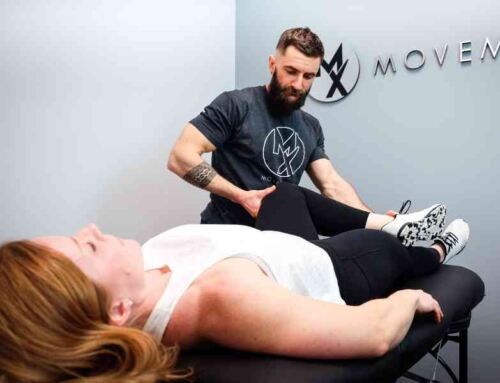
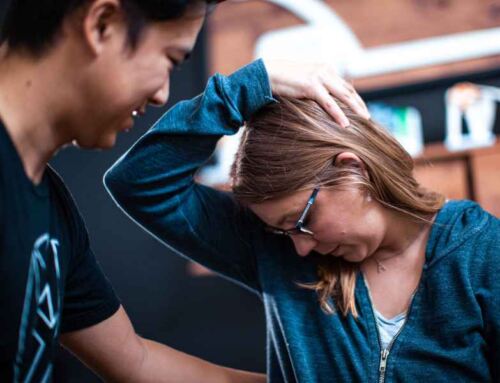
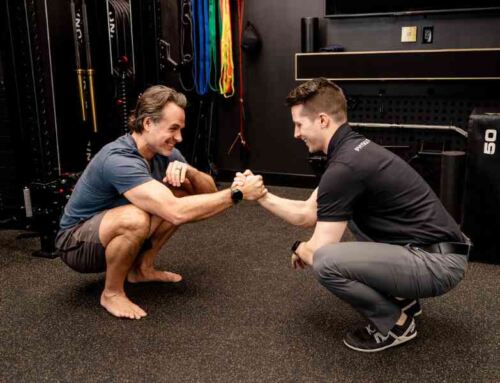
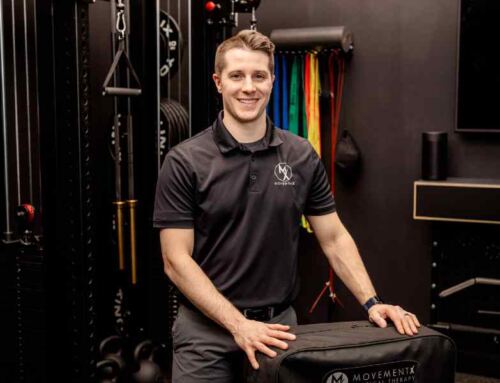
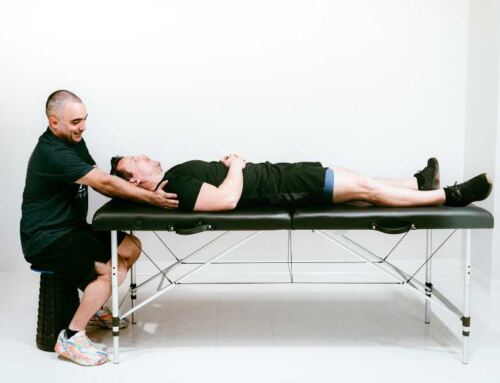
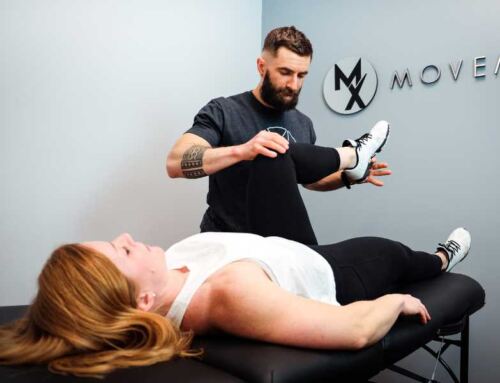
Is there a VRT in the Reading, Pennsylvania area?